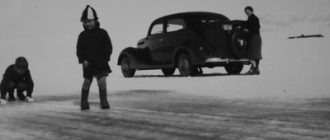
In setting out to buy a geocaching GPS receiver, you should be aware that there are two types of GPS receivers available. The first is the units that are designed to work by simply logging into your computer and piping in the answers from your memory. This can be a little laborious, so you are better off picking up a compact unit that will plug into your car lighter socket – because it is this that will prove most effective.
The second type of GPS receiver is the one that comes with a set of coordinates on a map, this should always be referred to as a ‘map GPS receiver’. This way, you are commanding the GPS to maintain a fixed position even as you are moving about. It is capable of incorporating navigation co-ordinates from your satellite telephone receiver or map. These co-ordinates represent your physical location at a precise grid reference.
As you can see, reading GPS receivers can be down to a rather trivial matter of identification. You should however always be prepared to explain to a customer exactly why a particular piece of equipment is being referred to as a ‘Geocache’.
iking GPS receiversare also used in endurance sports such as cycling and skiing equipments. These types of equipments are used to constantly keep track of a subject’s location through repeated sampling of its performance. In this way, they are able to maintain a close correlation between the subject’s location and the position they have sampled.
But surely a GPS receiver can be used to geocaching just about anywhere?
Not quite! There are some countries that prohibit the use of GPS receivers, or limit it to indoor uses only. So don’t assume that your local park is approved for geocaching!
iker GPS receiversare also used in various automobiles and Transportation Equipment. These types of equipment are fitted with a optic delay unit to keep the GPS receivers identify signal as soon as it is received. Once the equipment is received, it has to be dismissed or navigated to a registration desk to start the geocaching process.
There are a number of ways that a geocache can be caches. But the most common ways that geocachers keep their caches up are by loading them into a containers. Caching containers are used just like any other containers and include the traditional cache bag, pencil, log book, gloves, flashlight stick, water container, food container and a reward token. When you find a cache, you have to sign the log book and attest that you have gone through the terrain on the GPS receiver to find the cache. You can leave a tip by writing a name and date on the log book, which can be done on the touch screen of the GPS receiver.
The fact that geocaching is a digital sport meant foragers, hunters and mountaineers means that there are a lot of cheats, secret societies and competitive rubbing of arms going on. A number of lovers of nature find themselves out in the wilds with a GPS unit in their possession. They UPDATE the location of their caches weekly.
Asia saw a peak in geocaching activity over the last decade. Nowhere else in the world does geocaching have the cachet it does in countries like North America and Europe. In Asia, geocaching is popular but is still seen as a young man’s sport. In part, this is a result of the unchanged tradition that still lingers after all the modern technologies that have wavered through our paths.
If you find yourself in the neighborhood with a GPS unit, you can start discovering amazing caches of technology that you can explore with your own eyes and touch.
orically, the dawn of the GPS unit came after the rapid increase of urbanization. People in the countryside had to migrate to the cities to find work. However, GPS unit has remained an exclusive sport to the few who can afford to join a club and spend time doing complex exercises calculated to bring them to better health.
In this era of GPS injuries, citizens have joined in to develop safe GPS techniques and to enjoy the outdoors less vulnerable to injury.OUTCaching has come a long way since the days of bulkyulu clips that have to be carried manually. Today’s GPS receivers are small and light in weight, yet they have enough capability to not only track a specified location, but also function as a spectrum artist to determine its precise location by measuring microwave reflections off the ground.
Modern techniques such as bit counting and peak finding have improved the reliability of GPS location finding. The “home plate” location is now more accurate than ever, and in some cases it is even able to lead the rescuers to a structure such as a home, underwater, or lost person. Geocaching is a high-tech version of a children’s game. You can hide a object, and track its position with satellites.












